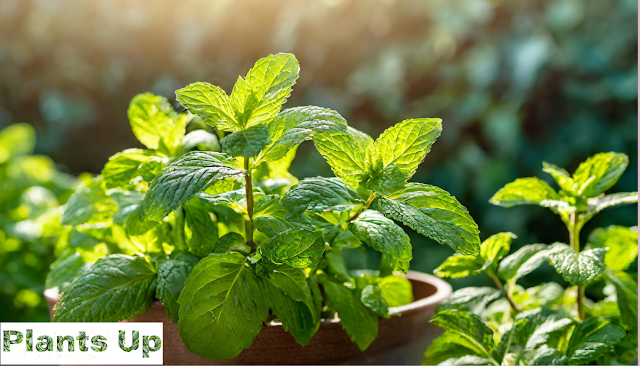 |
| Experience the freshness of homegrown mint! Learn how to grow and harvest this versatile herb in our latest blog |
Welcome to the wonderful world of Mint! With its refreshing scent and versatile uses, mint (Podina) is a delightful addition to any garden. In this comprehensive guide, we'll walk you through everything you need to know about growing and harvesting mint, from choosing the right variety to enjoying the fruits of your labor in delicious culinary creations.
Selecting the Right Variety:
Before diving into planting, it's essential to select the right mint (Podina) variety for your needs. The most common types are peppermint and spearmint, each with their own unique flavor profile and culinary applications.
Additionally, you can explore more exotic varieties like Chocolate Mint or Pineapple Mint, which provide exciting flavors and aromas to your dishes.
Selecting the Ideal Location:
Mint thrives in well-drained soil and prefers partial to full sunlight. When choosing a location for your mint patch, consider these requirements and ensure adequate distance between plants to prevent overcrowding.
While mint can be grown directly in the ground, planting in containers is also an excellent option, especially if you are concerned about its invasive nature.
Mint (Podina) Planting:
When it comes to planting mint, you have two primary options: starting from seed or propagating from cuttings. Although it is possible to start from seed, it is often easier and more reliable to propagate mint from cuttings.
Simply cut a healthy stem from an existing plant, remove the lower leaves and place the cutting in moist soil. Keep the soil consistently moist until roots develop and then plant the cutting in its permanent location.
Care and Maintenance:
Once your mint is established, it is relatively low maintenance but still requires some care to thrive. Mint prefers consistently moist soil, so be sure to water regularly, especially during hot, dry periods.
Additionally, fertilize your mint plants every few weeks to promote healthy growth, and prune regularly to prevent leggy growth and encourage bushiness.
Keep an eye out for pests like aphids or spider mites and address any problems promptly to prevent infestations.
Harvesting Mint (Podina):
One of the joys of growing mint is being able to harvest fresh leaves whenever you need it. The best time to harvest mint leaves is in the morning when the oil is most concentrated. Simply cut off individual leaves or stems as needed, being careful not to remove more than one-third of the plant at a time.
Regular pruning will encourage new growth and keep your mint plants healthy and productive throughout the growing season.
Preservation of Mint (Podina):
If you have abundant mint leaves, there are several ways to preserve them for future use. Drying mint is probably the most common method, simply hang the mint bundles upside down in a warm, dry place until completely dry.
You can also freeze mint leaves or make mint extract by steeping the leaves in alcohol.
Enjoying Your Mint (Podina) Harvest:
Once you've harvested and preserved your mint, it's time to enjoy the fruits of your labor! Mint is incredibly versatile and can be used in a wide range of culinary creations, from refreshing drinks like mojitos and mint tea to savory dishes like lamb chops or salads.
Additionally, mint has many medicinal properties and can be used to soothe an upset stomach or relieve a headache.
Conclusion:
Growing and harvesting mint (Podina) is a rewarding experience that allows you to enjoy the fresh, vibrant flavor of this versatile herb right in your own backyard.
By following the tips and techniques outlined in this guide, you will be on your way to cultivating thriving mint plants and enjoying their bountiful harvests for years to come.
Happy Gardening!